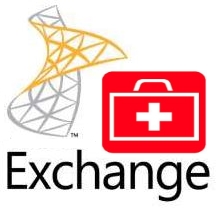For many organizations Microsoft Exchange 2003 was first iteration of the product to generally be considered good enough. Good enough because it wasn’t a nightmare to maintain, good enough because ActiveSync worked, and maybe just good enough because the business case for upgrading was pretty weak for many mid-sized organizations! Whatever the case, Microsoft – for their part – has been not too subtlety nudging us into newer versions of Exchange. Starting with Outlook 2013 and it’s Exchange 2003 compatibility issues, and extending to the April 8, 2014 date set firmly as the last day of extended support for Exchange 2003. The unfortunate reality is there are a thousands of organizations out there that are still depending on Exchange 2003. And if you’re reading this article, then you’re probably one of them.
With end of extended support, we’re brought to our present dilemma. If you’re now considering making an investment in Exchange, than it probably hasn’t been on your radar until recently. Frankly, if my organization wasn’t responsible for so many Exchange environments it probably wouldn’t be on mine either. So here you are, with the task of getting your corporate mail situation figured-out before end-of-life, and it’s a product you maybe haven’t really touched much in more than a couple of years. Which means… yep… figuring it all out again, right? But what if you could bypass that whole option analysis phase, and save yourself days of research? What if you had a go-to playbook that already had exactly what you needed to efficiently bring your Exchange 2003 organization to the present? What if you could do that without purchasing third-party tools, or spending your nights and weekends preparing? That’s exactly why I’m publishing this migration kit. This kit was created with the sole purpose with getting you out of the Exchange 2003 end-of-life scenario, and onto something supported by Microsoft with the least investment possible.
This kit represents our Exchange 2003 to Exchange 2010 co-existence migration playbook. It’s what we use to keep our clients off of a platform that has an expiration date of now.
What you’ll find here is everything you need to know to…
- Perform an Exchange 2003 to Exchange 2010 coexistence migration without reinventing the wheel
- Decommission Exchange 2003 with as little pain, time, and investment as possible
- Save yourself hours by following our step-by-step migration checklist.
Microsoft does a great job of putting migration planning and information out there, but a terrible job of turning their content an actionable playbook. And that’s exactly what you’ll get from this kit… content organized in a playbook that makes sense, and enables you to hit the ground running. You’ll find tons of Microsoft stuff here, including KB articles, content, and how-to’s, as well as original content. But it’s organized into a step-by-step checklist format so you you’ll find the right resources exactly where you need them… culled from every training kit, presentation, tutorial, blogpost, “learning experience”, and otherwise… all consolidated into this kit. This kit not all new, and not all original – but it’s our playbook, used for real clients, and we know it just works because we’ve done it (over, and over again).
Get your Exchange 2003 end-of-life situation handled today, and move onto more interesting projects. (And yes, this also works for SBS 2003 Environments).
